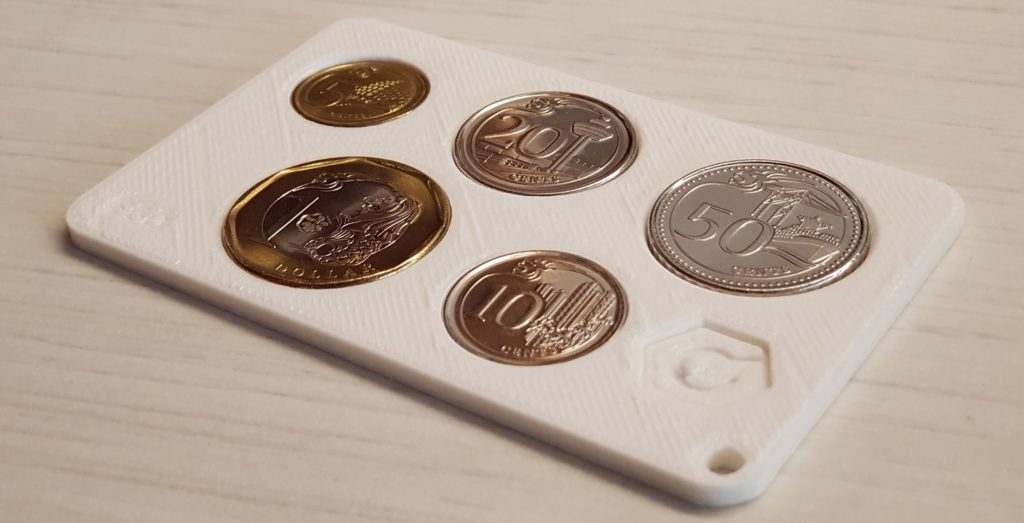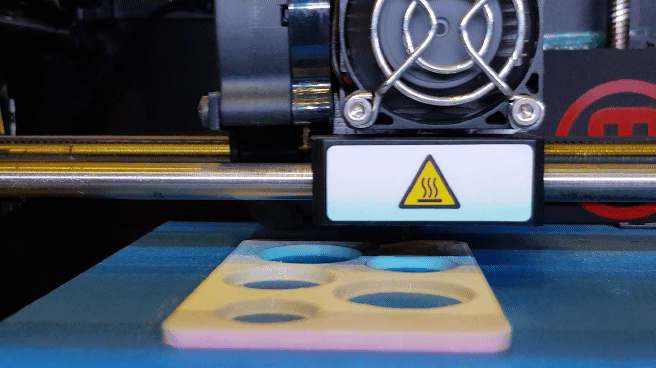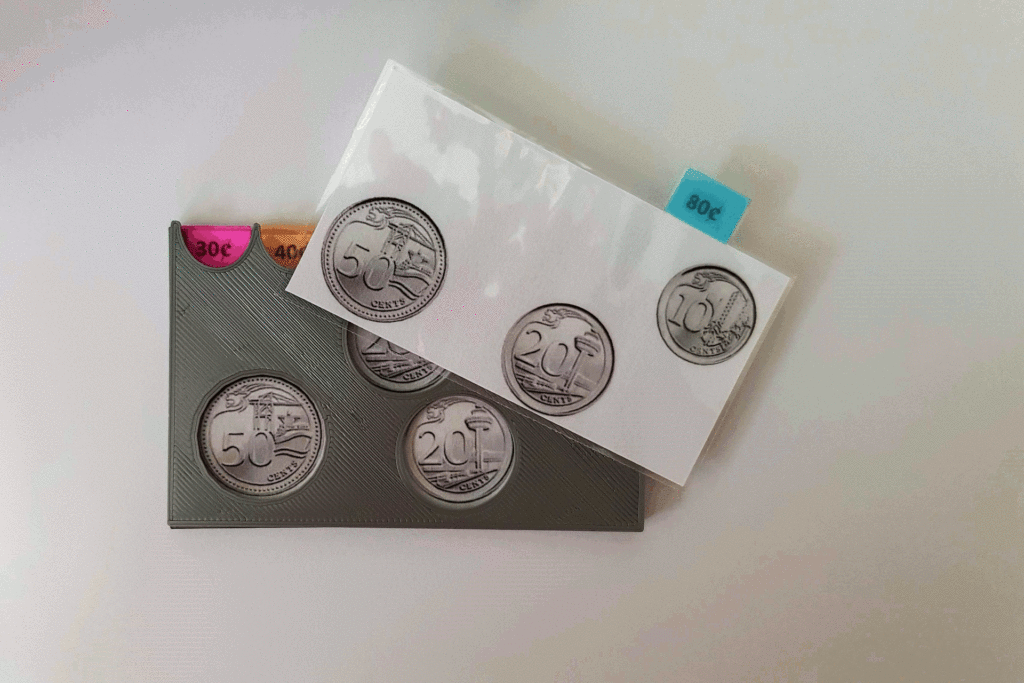Handling coins over checkout counters at supermarkets or provision shops is a task many do not really fuss over. However, it is a common problem faced by persons with intellectual disability, as experienced by an adult client of Community Psychology Hub (CPH) at Enabling Village. Though able to travel and shop independently, the client tends to feel increasingly anxious and finds it difficult to handle coins when shopping. This results in a rather hefty accumulation of coins that she carries with her everywhere, which may cause inconveniences especially when she commutes with many bulky items.
Tech Able has been collaborating with CPH and Engineering Good (a non-profit organisation) in search for a possible 3D-printing solution. The team has built a prototype of an easy-to-use 3D-printed coin card tool to help CPH’s clients with similar problem ease their anxiety when handling coins. Here’s how the prototype was created and developed:

Prototype Version 1: Returning to Basic Functionality
The first prototype of the coin card was inspired by a 3D printing file. Originally a wallet-sized foreign currency coin holder for handling loose change, Engineering Good modified the file so that the size of Singapore’s latest circulated coins can perfectly fit in the file. Its design comes with five round-shaped pits for holding coins with denominations of 5, 10, 20, 50 cents and 1 dollar. This coin card was 3D-printed at Tech Able with the MakerBot Replicator 3D printer. The finished prototype is about the size of a name card holder, and can be conveniently carried in users’ pockets to help them better manage and organise coins for ease of spending.

The first prototype of the 3D-printed coin card was then trialled by one of CPH’s clients with intellectual disability. Feedback revealed that the 3D-printed coin card helped the client handle the coins better. However, the client still has some difficulty with the task of counting coins. To address this problem, the team went back to the drawing board for further brainstorming and discussions.
Prototype Version 2: Better Modifications, Improved Functionalities
With inputs from the collaborating team, and 3D-printed by Engineering Good, the modified prototype has a slot that can store up to six stackable laminated cards. Designed and made by Tech Able, each laminated card consists of various combinations of printed images of 10, 20, and 50 cents, to form the respective aggregated amount labelled on top of each card, and colour-coded for different values.
When the laminated card is inserted on top of the stack of cards in the card holder, users can rely on the round-shaped pits to identify the coins to use for a particular aggregated amount. These cards serve as a guide to help users in counting and matching the denominations of the coins needed to make payment for purchases under a dollar.
For example, to make a cash payment for an item which costs 80 cents, the user can pull up the laminated card labelled “80¢”, and slot it in front of the stack of cards to show the recommended combination of coins to use. The user would learn that he or she needs to make payment using one 50 cents, one 20 cents, and one 10 cents coins. The user can also match the physical coins with the images of the coins shown through the round-shaped pits.
Now that the coin card holder’s prototype is modified for improved usability, the team will make some final finishing touches before the same client from CPH tests it again. We hope that the coin card holder prototype will eventually be a practical tool to help persons with intellectual disability gain more confidence and independence when making payment with coins.

